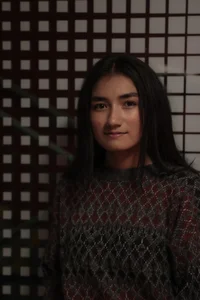
Community organizers and artists are developing supportive spaces in the city for Black Vancouverites to connect and create – a difficult task to take on, given the huge deficit of BIPOC representation in the arts scene resulting from Vancouver’s racist history.
Second-year International Relations student Gankal Sally Ka led a discussion on January 17 Black cultures in Vancouver with Maya Preshyon, founder and director of the Vancouver Black Library (VBL), as well as Krystal Paraboo, project manager and curator of the Black Strathcona Resurgence Project (BSRP). The panel discussion was put on by Coordinated Arts Program, with support from the Centre for Community-Engaged Learning.
Tucked away in the Place of Many Trees, the discussion addressed both the structural and historical roots of Black isolation in Vancouver, and how artistic and cultural initiatives can help increase connection, joy and resilience.
After moving to Vancouver from Senegal, Ka mentioned that she found it difficult to adjust to being a racial minority, but she credits projects such as VBL and BSRP with having helped her find a sense of belonging in the city.
BSRP is a mural art series based in what used to be Hogan’s Alley, an area of Vancouver that was a hub for Black cultures that the city of Vancouver demolished to make way for the never-built Dunsmuir Viaduct.
The goal of the project was to primarily highlight work by Black artists; however, given that the pieces are located in Chinatown and on stolen Indigenous land, Paraboo chose to honour the solidarity between racialized groups by including Indigenous and Chinese-Canadian artists.
Though it resulted in stunning pieces of public art, Paraboo expressed that the effort required to execute the project was grueling: “Was it worth all the harm and labour that we went through?”
During her partnership with the Vancouver Mural Festival, she felt tokenized by an “all-white leadership [team]” that was not adequately compensating its artists. In the future, Paraboo said that she would prefer to collaborate with BIPOC or individuals/organizations that can demonstrate genuine allyship. Still, she hopes that her work will pave the way for similar projects and facilitate the process for those who hope to follow in her footsteps.
Preshyon had been involved in the underground art and music scene for years, but never felt like their identities were reflected in the creative teams running the venues, or in the lineups of performers. She longed for a space where she could connect with people who shared her experiences.
After coming across an article that discussed the significance of libraries as open, social spaces, they developed the initial design for VBL. She jokingly mentioned how she is not a huge reader, but recognizes how accessible resources and shared spaces can bring people together.
In addition to offering a selection of free books and a safe space to study or hang out, Preshyon hopes that the library will eventually be able to host a variety of other services to serve the community, from group therapy to poetry readings – she described VBL as a “bougie community centre.”
In response to a question about how UBC supported them in the development of VBL, Preshyon didn’t go into much detail, but mentioned that they would like to see the institution put more effort into supporting Black communities “genuinely, not just for optics.”
Projects like these are crucial in helping to build and revitalize Black cultures in Vancouver.
According to Ka, “Vancouver Black Library is not just a library” – it is a safe space to learn, connect and heal.
Since they prioritize interpersonal connection, these initiatives actively fight against the loneliness caused by isolated “cultural bubbles,” which Preshyon explains are the result of the forced displacement of Black individuals throughout history, both from their home countries to Canada, then from their neighbourhoods within Vancouver.
Though similar initiatives are still hard to come by in Vancouver, with people like Preshyon and Paraboo doing everything in their power to guide and uplift young activists, there will most definitely be more to come.


